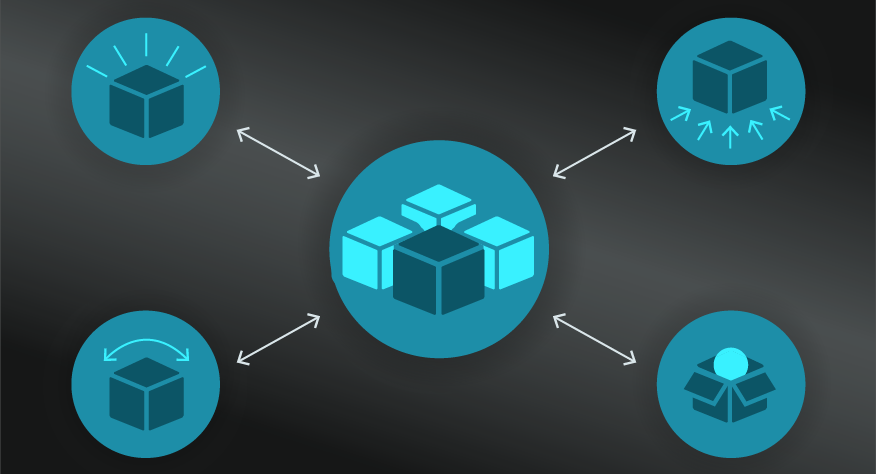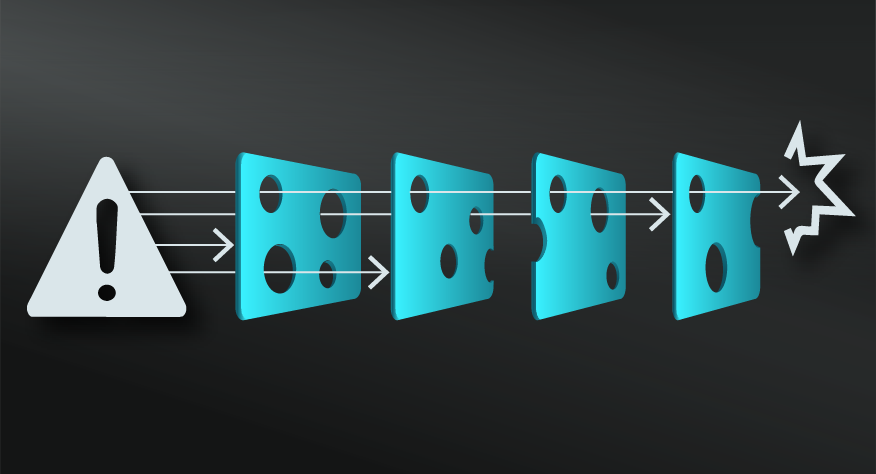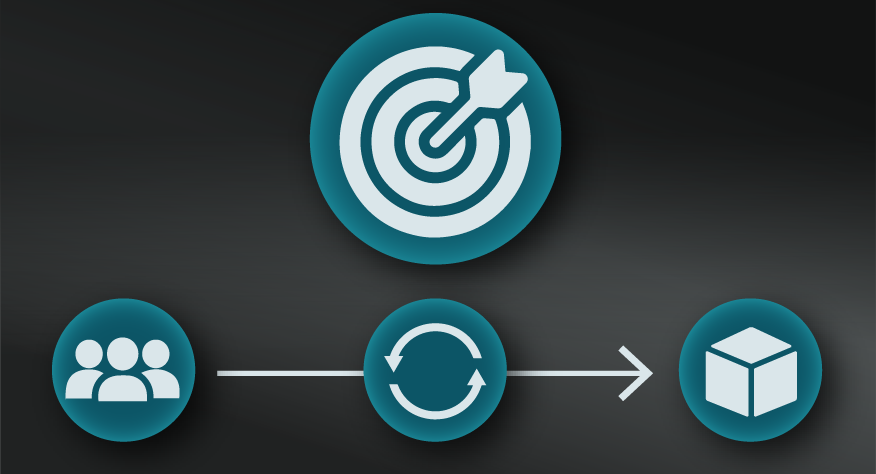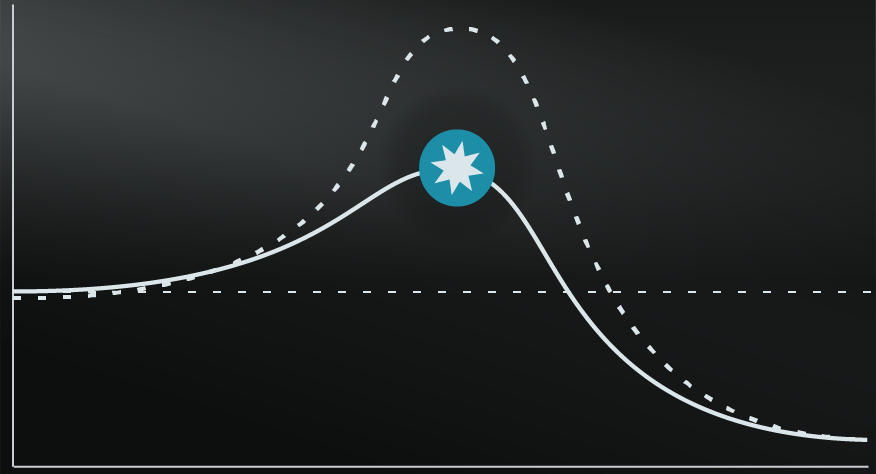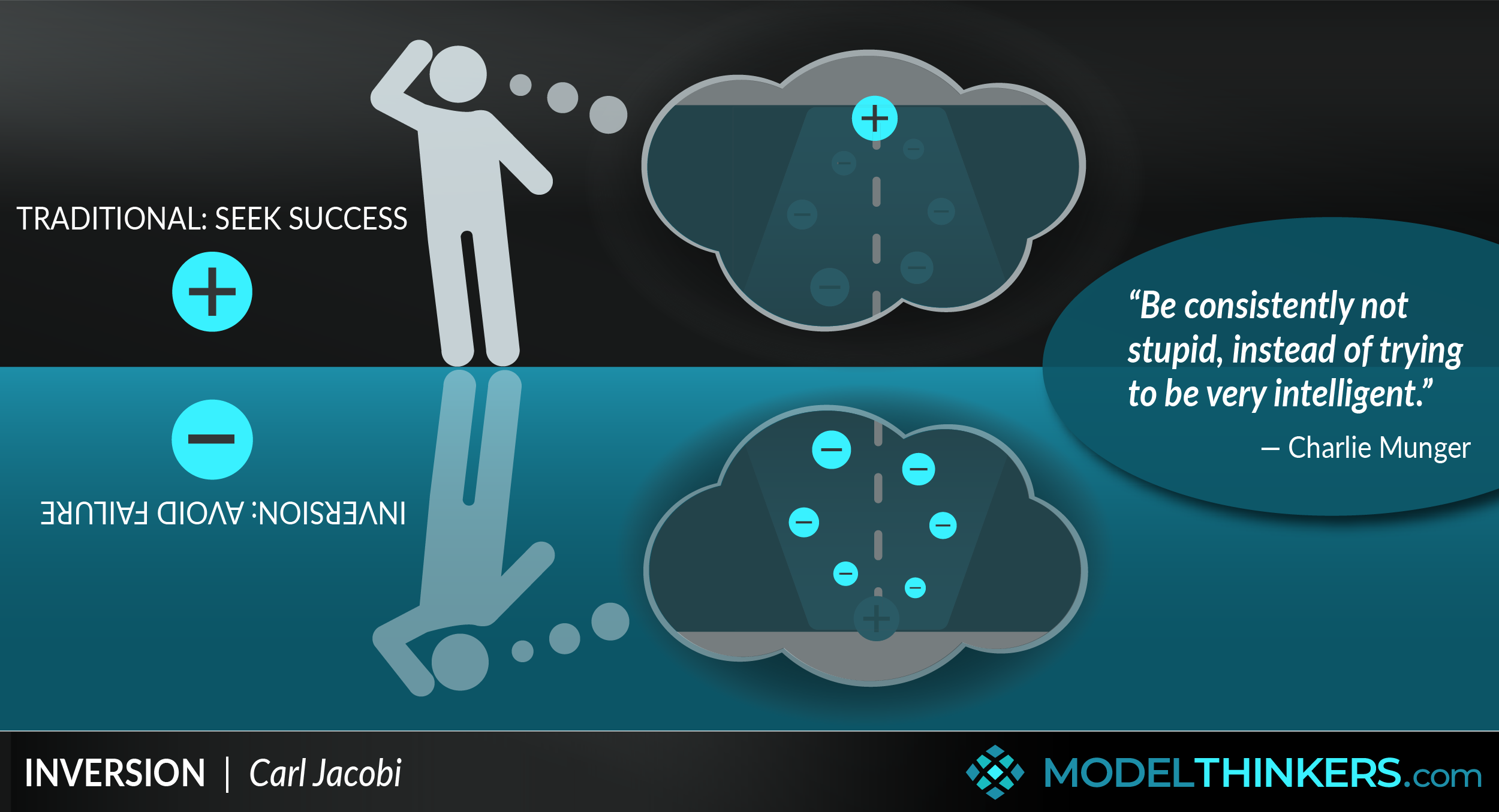
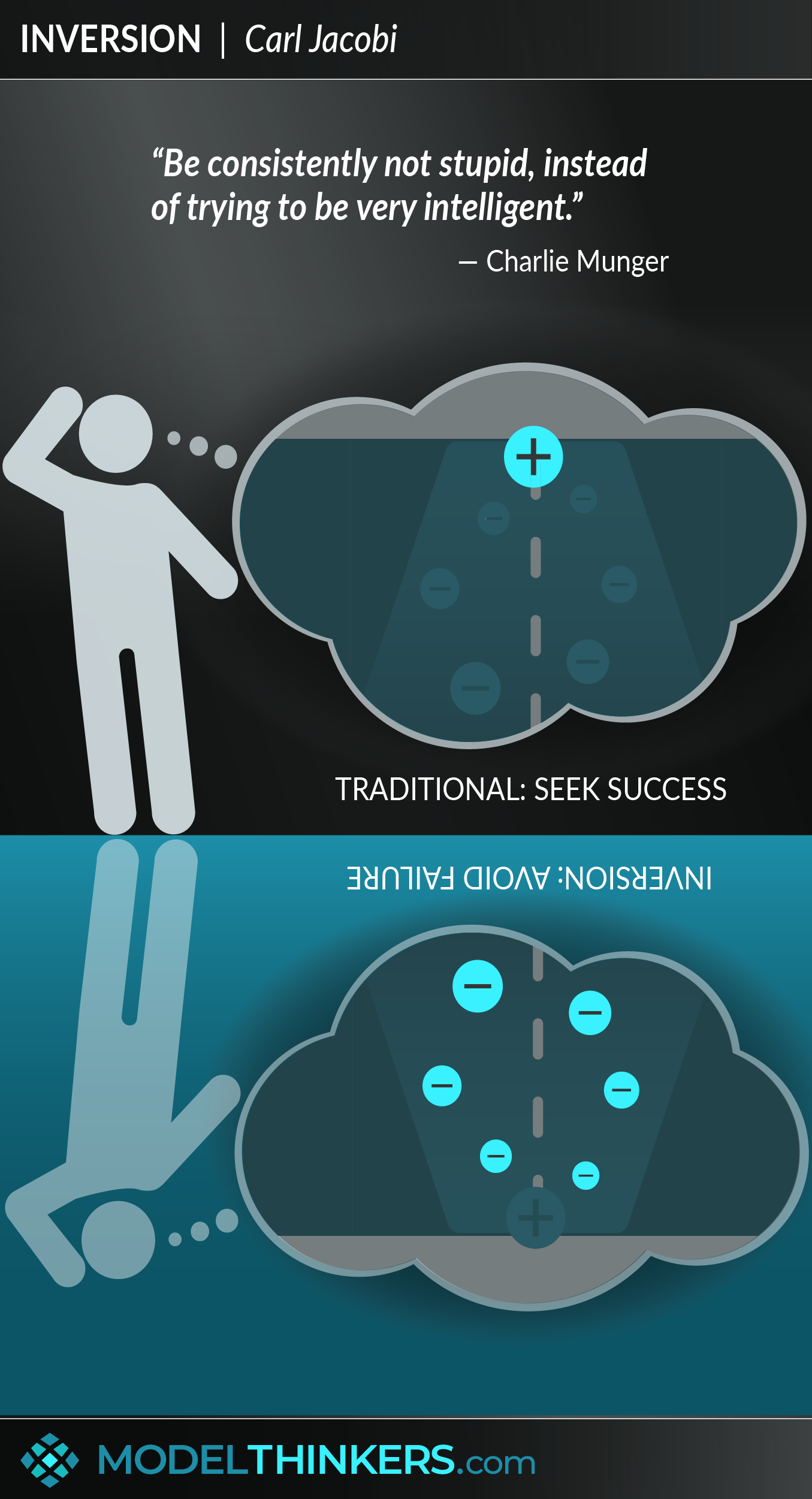
 0 saved
0 saved
 55.4K views
55.4K views








Rather than focusing on having a brilliant day, why not consider what a crap day would look like and avoid that? It will likely be easier and will achieve similar results. Or, as Charles Munger pointed out: "It is remarkable how much long-term advantage people like us have gotten by trying to be consistently not stupid, instead of trying to be very intelligent."
Inversion involves looking at a problem or decision from the opposite point of view so, for example, rather than focusing on achieving success, Inversion encourages you to consider how to avoid failure.
MUNGER ON INVERSION.
Munger, a big fan of Inversion, explains it well: “Invert, always invert: Turn a situation or problem upside down. Look at it backwards. What happens if all our plans go wrong? Where don’t we want to go, and how do you get there?
"Instead of looking for success, make a list of how to fail instead–through sloth, envy, resentment, self-pity, entitlement, all the mental habits of self-defeat. Avoid these qualities and you will succeed. Tell me where I’m going to die so I don’t go there.”
REFRAMING ANYTHING.
Inversion rates as one of our most versatile and adaptable models, because it can be applied to almost anything. For example:
- Want to improve collaboration? Ask 'how might we prevent or hinder collaboration?' and avoid that.
- Want to increase sales? Ask 'how might we lower our sales as fast as possible?' and mitigate against that.
- Want project success? Use a 'pre-mortem' to ask 'what might go wrong or prevent this project from succeeding?' and then mitigate against that.
- Want to progress in your career? Ask 'what is holding me back?' to focus your energy.
You get the idea, the point is to start with your goal, apply Inversion, and then invest your energy in avoiding your blockers or potential pitfalls to achieve progress.
IN YOUR LATTICEWORK.
Inversion is a powerful mental model that can be used in countless contexts to challenge the status quo and interrupt bias. It is also can add a new perspective when combined with a multitude of other Mental Models. Apply Inversion to help your Framestorming process and challenge your assumptions as part of First Principle Thinking. Also, combine it with techniques such as Rolestorming to help provide new perspectives on a problem.
Use it to help interrupt and prevent falling victim to the Confirmation Heuristic by asking 'what would I see if I was wrong?'; Consider outlandish 'what ifs' as part of Scenario Planning to identify potential Black Swan Events; or apply it to the Pareto Principle to identify 'how you could best waste your time', then avoid that. There are countless other possible combinations — see the Playbook below for more examples.




- Identify your goal and define what failure looks like.
Once you've identified a goal, in addition to the common project start of ‘defining what success looks like’ use Inversion to consider what failure looks like. Simply ask yourself what is most likely to go wrong or prevent you from achieving your goal?
- Take action to avoid the worst scenario.
Once you have envisioned the worst things that can happen and identified the actions that might take you there, invert again and avoid the behaviours /decisions that have negative consequences.
- Compare ‘cons’ when making a decision.
When trying to choose between two options, it’s common to consider and compare the benefits between them. Inversion would involve identifying what you dislike about both options, or the ‘cons’, and comparing those lists as part of your decision.
- Use ‘pre-mortems’.
A managerial practice arising from inversion is for a project team to meet before embarking on a project to imagine that it has failed. They then discuss what could have led to that failure and how they might avoid it.
It can be counterintuitive or deemed negative to focus on potential failure. It might also add to fear based on loss aversion.
In addition, focusing on potential fails does not support building on strengths and identifying more positively framed opportunities.
That said, these issues are addressed if inversion is just part of your problem solving or decision-making process, rather than the only model you use.
Phillip Mudd on counterterrorism and ‘thinking backwards’.
Phillip Mudd, a member of the CIA, helped reframe the post September 11th counterterrorism focus using a form of inversion or. He argued that rather than the key question being ‘where is Osama bin Laden?’. Instead, he argued that the real question was ‘how might we protect Americans?’ His approach, which he calls ‘thinking backwards’, involves six steps:
- Define the objective
- Determine the right question
- Determine the 6-10 relevant drivers
- Assign metrics
- Encourage an outside view to identify vulnerabilities
- Meet regularly and use metrics to drive frank conversations
Find out more via this TEDx talk by Philip Mudd on the Art of Thinking Backwards.
Warren Buffet and Charles Munger on investments.
Munger often cites inversion as a key mental model behind his and Buffet’s investment approach. In the words of Buffet: “Rule number 1: Never lose money. Rule number.2: Never forget rule number 1.”
Inversion is a powerful mental model that can be used in many contexts to challenge the status quo and interrupt bias.
Use the following examples of connected and complementary models to weave inversion into your broader latticework of mental models. Alternatively, discover your own connections by exploring the category list above.
Connected models:
- First principles: as another way of identifying and challenging extraneous assumptions.
- Fast and slow thinking: forcing slow thinking by turning things upside down.
Complementary models:
- Circle of competence: it’s easy to be over optimistic about chances of success, use inversion to test and challenge this.
- Confirmation bias: inversion can help challenge and interrupt this bias.
- Occam’s razor: to help reframe a challenge.
- Overton window: consider the unthinkable options that might be mainstream in the future.
- Black swan event and scenario planning: ask what ifs.
The Inversion Principle is based on a maxim by German mathematician Carl Gustav Jacobi: “Invert, always invert.”
Charlie Munger has been popularising Jacobi’s maxim for the past 20 years; advice on how to use inversion and include it in a latticework of mental models can be found in Poor Charlie’s Almanack: The Wit and Wisdom of Charles T. Munger.
 My Notes
My Notes
Oops, That’s Members’ Only!
Fortunately, it only costs US$5/month to Join ModelThinkers and access everything so that you can rapidly discover, learn, and apply the world’s most powerful ideas.
ModelThinkers membership at a glance:






“Yeah, we hate pop ups too. But we wanted to let you know that, with ModelThinkers, we’re making it easier for you to adapt, innovate and create value. We hope you’ll join us and the growing community of ModelThinkers today.”









